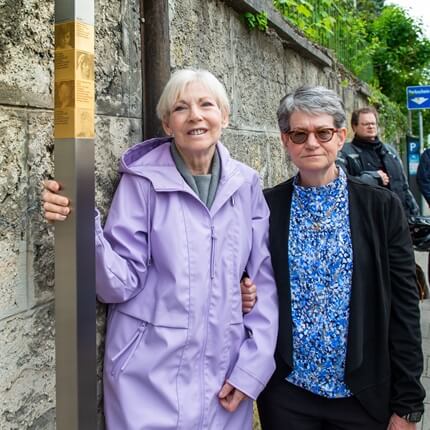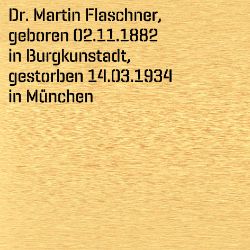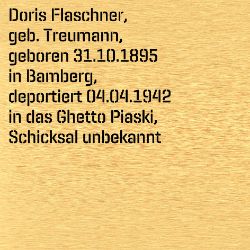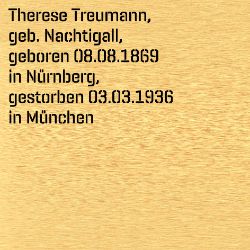Selma Rosenfelder was born on October 4, 1906, in Augsburg, to the merchant Heinrich Rosenfelder and his wife Sophie, née Reiter. Her father owned a clothing store in Augsburg’s Maximilianstraße. Selma grew up with three sisters and two brothers; her father died when she was twelve years old. She attended the Maria-Theresia school and later worked as stenotypist.
In 1934 Selma Rosenfelder moved to Munich and lived in the Tengstraße for a few weeks. In the same year her mother also moved to Munich; the two women lived on the first floor of the building at Haimhauserstraße 18 (today 2) as of September 1934. On July 3, 1939, Selma Rosenfelder, aged 32, married my great-great uncle, the engineer Stephan Franz Sänger. She continued to live with her mother even after the wedding. Just a few weeks later the Nazis forced Selma Sänger and her mother to leave the apartment. Where Selma Sänger lived in the period that followed is unclear. In June 1942 she obviously lived for a short time with Sophie Rosenfelder in the hospital of the Jewish religious community in Hermann-Schmid-Straße. She then moved to her husband in Lindwurmstraße 125. The Jewish religious community had a prayer room there until June 1942. After it was closed, the building was forcibly appropriated because it was a “Jewish house.”
As Sophie Rosenfelder was deported to the Theresienstadt ghetto on July 22, 1942, Selma and Stephan Sänger decided to accompany her. In Theresienstadt Selma Sänger was detailed to the same quarters as her mother; Stephan Sänger was placed elsewhere. After a time, Selma Sänger succeeded in gaining a position on the rations committee. She was responsible for allocating food supplies and assisted in distributing the rations – and was thus able to provide for her family. In the spring of 1944 Stephan Sänger was appointed head of amenities and Selma Sänger was able to live with him in a room on the maintenance yard. A few months later, the SS deported Selma Sänger to the Auschwitz extermination camp on October 6, 1944. The deportation train arrived in Auschwitz on October 9, 1944. Whether Selma Sänger was murdered immediately upon arrival or later is not known. Her husband Stephan had been deported to Auschwitz five days before. He, too, was murdered. Sophie Rosenfelder, Selma Sänger’s mother, survived the Theresienstadt ghetto and after liberation emigrated to join her children in the United States. (Text Nancy Freund-Heller, editor C. Fritsche, translation C. Hales)







-Flaschner_image.jpg/jcr:content/EZ_BILD_15559.jpg)

